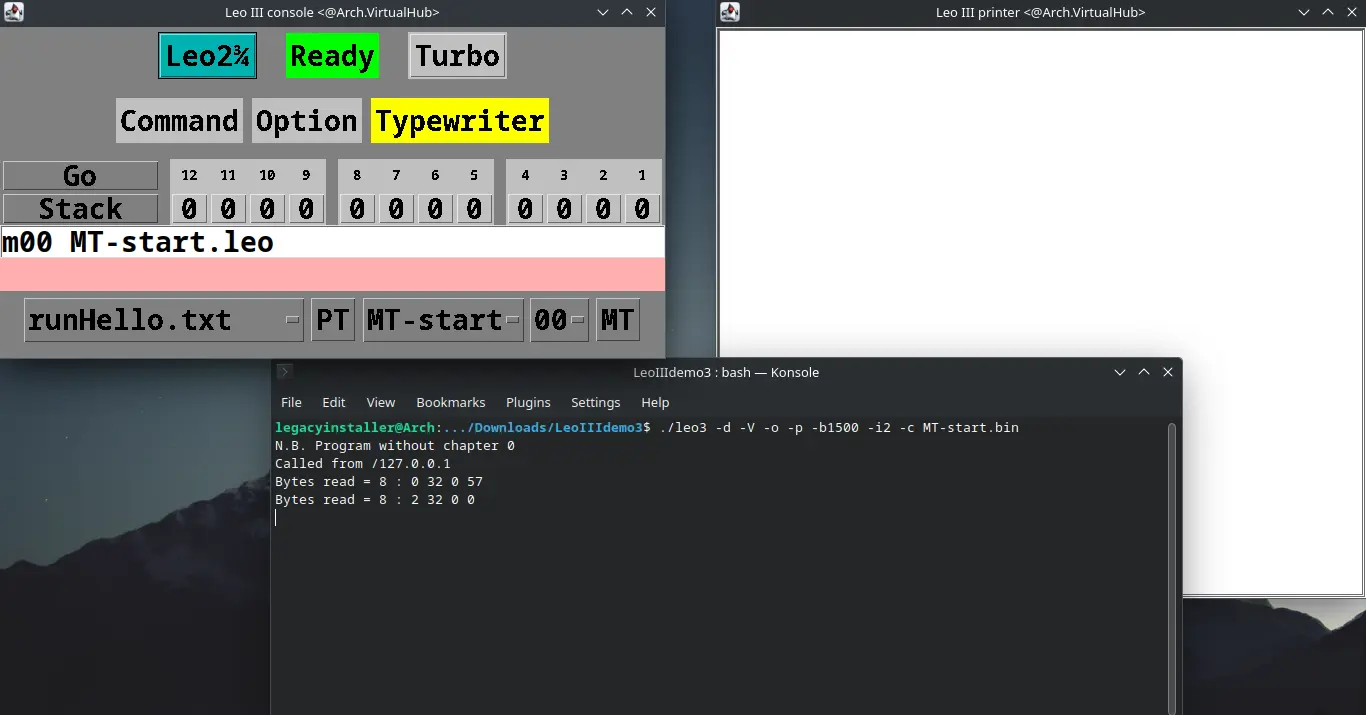Mainframe Operating Systems of 1960s

In this post, we will see some Mainframe operating systems which were released in the 1960s and can be run on an emulator.
1960
IBSys
In the year 1960, an operating system called IBSys was released for the IBM 7094 mainframe computer. It was a very crude operating system. You can download a kit for running it using the SIMH emulator here. The kit is made for Windows only. It needs to be heavily modified to run on Linux. You can download manuals from bitsavers.
1961
Leo III
Leo III was a computer, actually, but the operating system that ran on it had no name. So, we will refer to it as Leo III.
You can download a demo from here. Follow the instructions in the readme.htm file inside the archive, and you should be up and running.
1966
DOS/360
DOS/360 was an operating system for IBM System/360, System/370 and later mainframe computers. Very detailed instructions on how to run it in an emulator are available here.
You can download the manuals from bitsavers.
OS/360
OS/360 was also an operating system for IBM System/360. You can run it using the instructions from here. Manuals are available from bitsavers.
1967
MTS
MTS (Michigan Terminal System) was an operating system developed for the IBM System/360 and compatible mainframes at the University of Michigan. You can run it in an emulator using instructions here. Manuals are available from bitsavers.
ITS
ITS (Incompatible Timesharing System) was an operating system for PDP-6 and PDP-10 mainframe computers. It can be run on the SIMH emulator by following the instructions here. You can read more about it on the Computer History Wiki.
1969
Multics
Multics (Multiplexed Information and Computing Service) was an influential early time-sharing operating system for the GE-645 mainframes and the Honeywell 6180 series machines. It can be run in an emulator using the instructions here. You can download manuals from bitsavers.
George 3
George 3 was an operating system for the ICL 1900 series of mainframes. It can be run in an emulator by following the instructions here.
That's it. Of course there are many more Operating Systems which I have not covered, but these are all of them which I was able to find and run in emulators. If you know of more, please let me know in the comment section.
Stay tuned!
Tell us about what you liked/disliked about this page on Discord. Are you facing any problem in following any of the tutorials? We will help you. We love to chat with people interested in old software:

